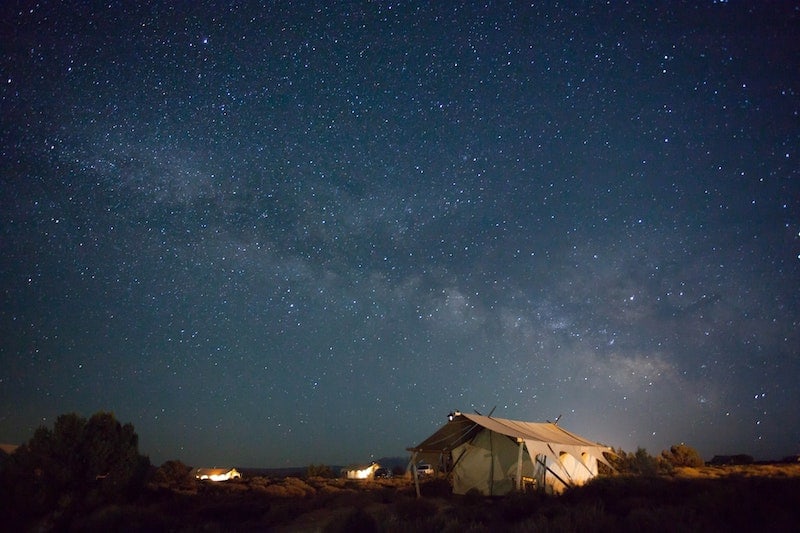Taking great images of the stars and objects in space takes a lot of dedication, effort, and expertise. But the fact that it is not easy raises the barrier to entry, therefore how to make money from astrophotography?
The answer is yes, you can and some astrophotographers are very successful and make a living doing what they love. However, it is not easy and takes a lot of work.
In this article, we present 21 ways you can make money with astrophotography in four different categories and explore some of those individuals doing so successfully:
- Selling Astrophotography Images
- Getting an Astrophotography Job
- Teaching Astrophotography
- Starting an Astrophotography Business
Selling Astrophotography Images
1. Sell Astrophotography Prints
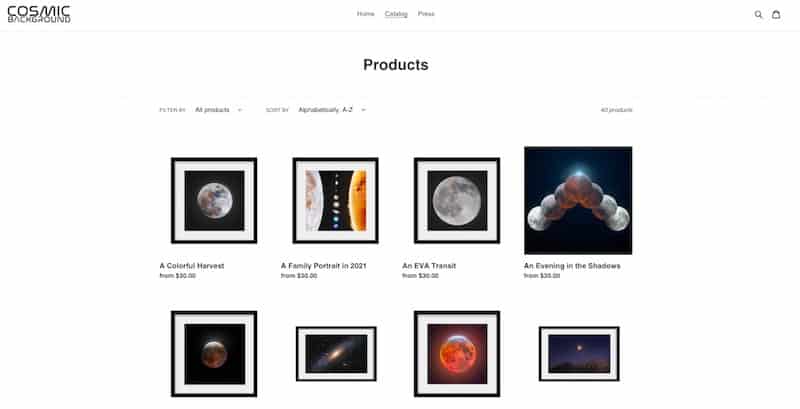
The most obvious way to make money with astrophotography is to try and sell your images.
The challenge with this is that it is not that easy for a couple of reasons:
- You need to be able to compete with, for example, NASA offering their images for free.
- You need to have developed a strong online presence/following of people that are going to be interested in buying one of your images.
With regards to the first point, NASA gives all their photos away for free, as does the European Southern Observatory. This means anyone can get an amazing image from Hubble (or the James Webb Space Telescope soon) to do with whatever they please.
Therefore it is hard to compete on planetary or deep sky images. There are a million great photos of Jupiter or the Andromeda Galaxy, but how do you create something unique and different that someone might want to buy?
The key here is to offer the buyer a unique opportunity.
One way is to offer specific images of astronomy objects on a specific day. I.e. what the moon or Saturn looked like on a certain night from a specific location. This particularly works if capturing an astronomical event like a solar or lunar eclipse.
They can also be offered hand-signed on a physical print. This is something the astrophotographer Andrew McCarthy does – both offer a unique image and hand-signing the print:
This is also being released in limited quantities as a hand-signed print. This is only the second image I’ve done like this, available in limited quantities. No commercial printer is involved, just me. I even include a certificate of authenticity! https://t.co/5mysxmAbvQ pic.twitter.com/12XGJJs15J
— Andrew McCarthy (@AJamesMcCarthy) April 7, 2022
Another option is to focus on astrophotography landscapes from unique locations and vantage points. For example:
- Can you hike a mountain and camp out overnight to get an image of the Milky Way in a place that no one else has done?
- Can you capture the starry skies and planets above a certain landmark that people might want to display on their walls? I.e. the city they live in, or the stadium of their favorite football team?
This leads to the second point – having your own audience who might want to buy your images.
There are platforms like 500px where, if you are accepted, you can upload your images and let them offer them for sale on a marketplace. However, anecdotal evidence is that you are unlikely to make much money doing this.
Your chances of making meaningful money are better if you have a following on a platform like Instagram or YouTube and you sell your prints directly (read below for more information about developing a following on platforms like this).
Two ways of then selling the prints are:
- Using a site like SmugMug to create an online store that can handle all the selling, printing, and distribution for you. This will be easier, but you have less control and the platform will take a cut of the sales price.
- Creating your own website and managing the sales, printing and distribution process yourself. This is a lot more work, but you are more in control of each step and can keep all the money for yourself (minus costs).
In short, you can sell astronomy photography prints for money, but it’s a lot of work, you likely need to build a strong presence, and you need to be creative for the images to sell.
2. Sell Astrophotography Stock Images
An alternative way to sell images is to sell to stock photo sites.
With these, you need to submit your images in line with what the site is looking for and then they offer them to their subscribers. You then make a small amount each time they are used (generally starting from just a few cents).
The downside is that you don’t make much each time, the upside is that it is pretty passive once you have submitted your images and the site takes care of promoting your images and getting them in front of people.
The key here is to create images that the users of these stock sites will want. For example, the most common users are often businesses that have corporate accounts and need images for content on their websites or in presentations, etc.
I have personally sold some stock images and, from my experience, images that include people are usually very popular for corporate blogs. For example, people looking up in awe at a starry sky might work for corporate content.
Other astrophotography images that have worked surprisingly well for me are fairly plain images. For example, this fairly unspectacular image of a starry sky that I offer on Unsplash (a free stock site) has been downloaded nearly a thousand times in the first year or so since publishing:
Thanks to @SkiesandScopes for making this photo available freely on @unsplash 🎁 https://t.co/0CI5hwKDwy
— Skies & Scopes (@SkiesandScopes) April 13, 2022
I presume the high amounts of downloads is because corporate types might use it for backgrounds in slide packs where they will put text over the top.
Therefore, to be successful you might have to put your artistic pride aside and focus on creating images that the users of these sites will want.
Examples of stock photo sites are:
For most of these, getting accepted is not easy and may require a few tries at numerous different sites. There is also a difference between Macro Stock and Micro Stock sites.
If you want to investigate this more, see this guide to selling stock photos.
3. Sell Astrophotography NFTs
A relatively new phenomenon is NFTs – Non-Fungible Tokens. This is effectively a way of selling ownership of a digital asset (e.g. a photo) to someone else.
We won’t go too deep into it here, but there are some astrophotographers exploring this. See for example:
- Andrew McCarthy (Cosmic Background) on OpenSea and Foundation
- Econgreg on OpenSea
- Trevor Jones (Astro Backyard) on OpenSea
If you want to read more about this, see this guide to NFTs and photography.
4. Sell Images to Publications
Getting paid to have your images used in newspapers and magazines is hard, because there is so much competition and so many freely available images through stock sites, but also places like Flickr.
To increase your chances, a good bet is to take astrophotography images from landmarks within your state or local area and approach local publications.
For instance, a local magazine may well pay you for a unique image taken in a regional park or similar. Or a website or organization promoting local tourism may be interested in a starry sky landscape image over a local landmark, like a lake or mountain.
5. Win Astrophotography Competitions
Whilst you are unlikely to be able to make a reliable income this way, there is money to be made by entering and winning astrophotography competitions.
For example, the most famous astrophotography competition is the Royal Museums Greenwich Astronomy Photographer of the Year which offers £10,000 (roughly $13,000) for the overall winner, plus smaller prizes for the winners and runners-up in each category.
To find opportunities like this, see our article on all Astrophotography Competitions and Contests you can enter.
Astrophotography Jobs
6. Get an Astrophotography Job
I hate to break it to you, but there aren’t that many astrophotography jobs available.
There are a few, for example, NASA has official photographers to document their work, but there aren’t many organizations looking for this (and for the most part this wouldn’t be astrophotography, rather taking photos of technicians and engineers at work).
You can also study to pursue a career in astronomy and work analyzing the data received from large telescopes, but this is a whole different topic.
Another option would be to teach astrophotography – see more on this below.
7. Create Astro Videography for TV
Some leading astrophotographers get paid to produce videography for television productions.
For example, astrophotographer Ayln Wallace was found on YouTube by the BBC and was asked to produce night sky footage and timelapse videos for them to use in online shows (see him talk about this in a video in the FAQs section below).
If you go on job listing sites you will find opportunities for videographers, but astrophotography-specific ones might be rare.
Teaching Astrophotography
8. Teach Astrophotography Workshops
Once you are experienced at astrophotography and getting good results, teaching it to others might make sense. There will almost certainly be a market of people that will want to learn from you and there are a number of ways you might want to do this. One option is to teach workshops.
To do this, you will have to be able to organize and take people out into the field and give them the guidance they need.
You could approach local astronomy clubs or universities and colleges to see if there might be opportunities. You could also sell them directly, but you will likely already need a good online presence and following to get people to be aware of you.
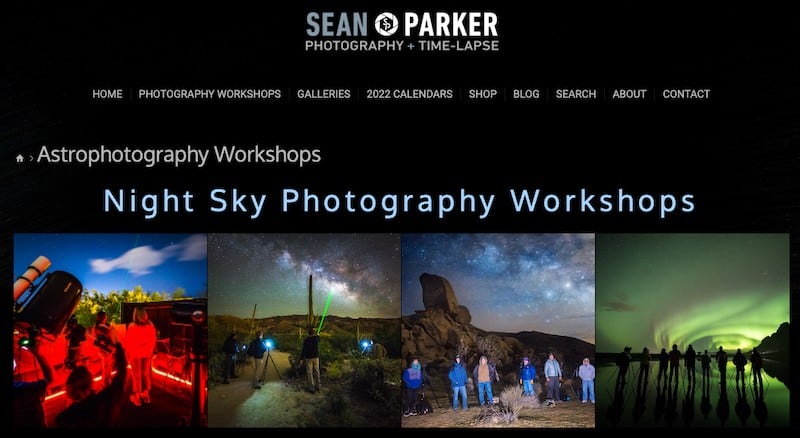
9. Teach Astrophotography Courses
In a similar vein, if you have the knowledge and experience you can create a course to teach astrophotography. This would be more theoretical and classroom-based, rather than taking people out into the field like with the workshops above.
This could be delivered in person, most likely via some kind of adult education organization that can host a classroom-based teaching course.
Another option is to develop an online course that could be hosted by a platform like Skillshare.
10. Tutor Astrophotography
Another option is to offer to tutor students on a 1-on-1 basis.
Again, this could be in person with local individuals, or it could be online.
See, for example, astrophotographer Gary Palmer offers a one-hour zoom call for tutoring via Explore Scientific.
11. Create an Astrophotography YouTube Channel
One very popular to teach astrophotography is to create a YouTube channel and create videos to showcase what you do and allow others to learn from it.
There are some great astrophotographers having a lot of success on YouTube – see the Best Astrophotography YouTube channels.
How you go about making money is by YouTube paying you to run ads on your videos.
The challenge is to have enough views of your videos to make meaningful money. In the video in the FAQs section below, Alyn Wallace notes that he made around £8k in 2020/2021 with 100k subscribers, but that this was his best year by far and was positively impacted by the pandemic and more people staying at home.
There are other ways to make money than ads though, including:
- Promote products that you endorse and get affiliate commissions from retailers
- Get sponsored to promote things directly
- Promote things you might be selling like merchandise, courses, software or products
- Promote your Patreon
The key here is that this can be a very effective tool for increasing your profile as an astrophotographer and getting noticed.
The challenge is that it is not easy and takes a lot of time to build your subscriber count. Just because you can take good photos doesn’t mean you know how to produce videos or that you will be a very good host.
12. Create an Astrophotography Instagram Channel
Instagram is another good platform to gather a following for your work. Whilst you can’t be paid directly from it, it is a natural platform to promote photography content and promote other ways that you make money.
It’s also a lot easier than, for instance, creating YouTube videos.
The same goes for other channels like Facebook, TikTok, Twitch, Discord, etc. Whilst you might not get paid directly for running the channels, you can raise your profile and build an audience that will help you sell your images, or promote your courses or Patreon, etc.
See the Best Astrophotographers to Follow on Instagram.
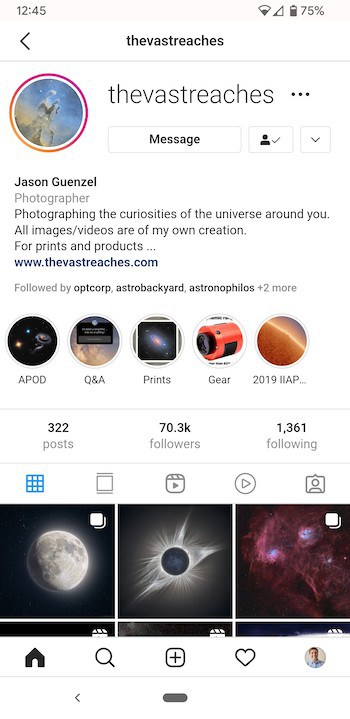
13. Create an Astrophotography Website
Just like creating channels on platforms like YouTube and Instagram, you will likely want to have your own website that can act as a hub for all you do.
The bonus of this is that you will be the owner and not just using another platform where you are at the mercy of their changing policies and algorithms.
You could just have a simple website that profiles you and presents how people can get in touch, or you could look to write in-depth content that people will want to read.
If you do start getting enough visitors you can make money from ads, and/or from the other streams of revenue you might have like affiliate sales, or your own courses or products.
This website, Skies & Scopes, is an example of this where we make money from ads and from endorsing products where we make an affiliate commission if the retailer sells something.
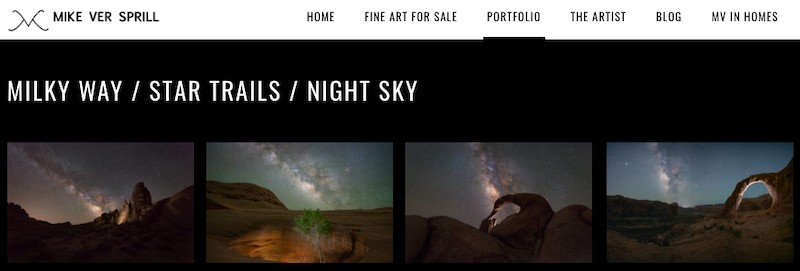
14. Write an Astrophotography Book
If you really know your stuff and are good at writing, then producing your own book that you can sell might make sense.
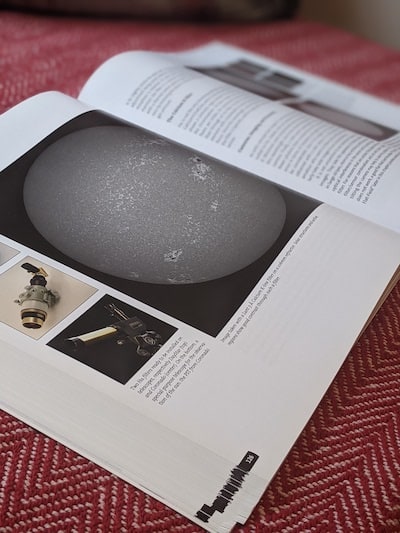
See the Best Astrophotography Books for inspiration.
15. Start an Astrophotography Patreon
Something that some popular astrophotographers offer is a Patreon where supporters can make a monthly payment directly to the individual.
This can be just to be supportive or it can be in order to get something extra in return – for example, exclusive videos or offering to critique people’s images to help them.
The key to this is to get a supportive following so people will be willing to give to you. This would most likely be through YouTube videos where your individual personality can come through a bit more and so people can feel like they know you and want to support you.
Here are some of the most successful astrophotography Patreons and the number of patrons they have (at the time of writing in April 2022):

Each patron pays usually between $1 and $30 and so you can see how this can add up to be a good source of income.
Starting an Astrophotography Business
16. Develop Astrophotography Software
There are a number of ways that software can aid astrophotography, most notably:
- Helping you acquire targets. This is most relevant with deep sky astrophotography with a telescope.
- Helping you process images. For example, stacking or just editing.
If you are into astrophotography you may come across a problem that you wish there was a software fix for and, perhaps, you could be the one to create the software. Either you could do this yourself if you have the skills, or you could try to find others to work with you.
The advantage of doing this would be that you would know that if there is a use for it, then it is pretty likely that other astrophotographers would see the value as well. Also, you would know the right forums and online spaces where you could promote your software product.
See our guide to Astrophotography for Beginners for more on astrophotography software.
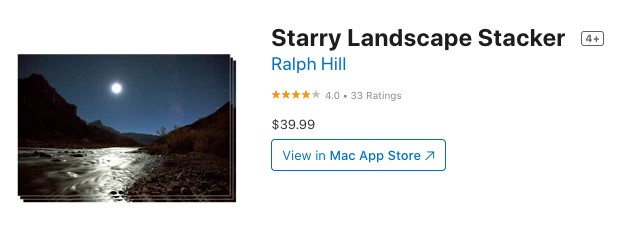
17. Develop Photoshop Plugins or Lightroom Presets for Astrophotography
In a similar vein to developing standalone software, you could develop something to work with processing software like Photoshop or Lightroom that helps astrophotographers.
There will always be a market for this since many astrophotographers enjoy the process of planning and going out to take an image, but do not necessarily enjoy the post-processing element.
A number of astrophotographers sell their own astrophotography presents and processes via their websites.
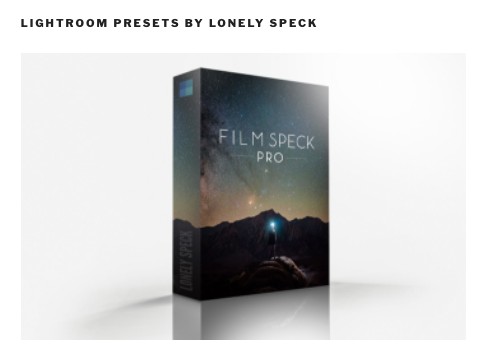
The bonus with selling any kind of software product is that you only have to produce it once and then you can keep selling it an endless amount.
18. Develop Astrophotography Apps
Alternatively to developing software, could you create a smartphone app that will help astrophotographers plan, take or process shots?
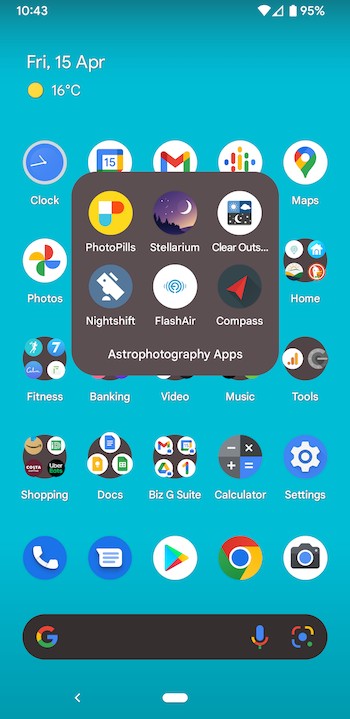
See the Best Astrophotography Apps for inspiration.
19. Sell Astrophotography Merch
Something that some popular YouTube astrophotographers do is sell branded merchandise like t-shirts and hoodies.

20. Develop Astrophotography Equipment/Gear/Products
Another challenge could be to create a physical product that you believe there will be a market for from other astrophotographers.
There is always room for innovation and as new technologies develop there may be opportunities for the right person to take advantage of.
One example of this in recent years is the development of app-operated smart telescopes that have in-built cameras. The leading models were both developed by French companies and have succeeded in identifying an opportunity created by advancing technology and the development of the smartphones in everyone’s pockets and have disrupted the existing telescope market.
The above example requires a large amount of capital and the creation of a functioning business. An easier step to make is perhaps what some astrophotographers have done is tweak existing technology to work better for astronomy photography and market it through their channels.
For example, Ian Norman at Lonely Speck sells light pollution filters, amongst other things:

Another example is Trevor Jones at Astrobackyard who worked with OPT to develop the Radian astrophotography telescope.
21. Create a Remote Astrophotography Observatory
This is another big project that would require a fair bit of upfront money, but could you create a remote observatory that people could
You can read our case study on how two friends built the Deep Sky West astrophotography remote observatory or watch this video introduction:
FAQs: How To Make Money from Astrophotography
Can astrophotography be a career? How to become a professional astrophotographer?
You can make money from astrophotography in a number of ways. If you are successful you can turn this into a professional career and this usually involves generating income from a number of sources, for example:
- Selling photo prints
- Teaching workshops and courses
- Creating a website/Instagram/YouTube channel and making money through ads or affiliate commissions for recommending gear
In this video, professional astrophotography Alyn Wallace tells the story of his journey from hobby to career:
You could summarize his journey as:
- Sharing images on Instagram and Facebook.
- People asking to buy prints
- Media and tourist organizations asking to use photos
- Speaking at clubs
- Creating a website
- Organizing workshops
- Creating a YouTube channel and making money from ads
- Getting commissioned for video work
- Affiliate commissions for endorsing products
- Developing digital products in Lightroom presents
- Developing physical products to meet challenges he was having as an astrophotographer that were not being met by existing products
- Creating a Patreon for supporters
- Writing a book
As you can see, many of these steps are supportive of each other and are about building a strong presence (“brand”?) and then multiple sources of revenue.
Are there astrophotography jobs? What NASA astrophotography jobs are there?
There are some official photographer jobs at NASA (and other space agencies) that mostly involve documenting work and projects.
How to get started in astrophotography? What equipment do I need for astrophotography?
The easiest way to get started in astrophotography is to try and shoot the stars above you with a smartphone or DSLR/mirrorless camera if you have one.
See our beginner’s guide to astrophotography, as well as our guide to astrophotography equipment.
Where are the best places to share astrophotography images?
You can share astrophotography images on social media, your own website, or photography websites.
See the Best Places To Share Astrophotography Images.
Where can I sell astrophotography images?
You can sell astrophotography images on stock photography sites, as well as photography sites like 500px.
You can also sell photography prints directly by setting up your own online shop with a tool like SmugMug.
Where can I sell astrophotography NFTs?
You can buy and sell astrophotography NFTs on OpenSea and Foundation.
Over to you: How To Make Money With Astrophotography?
So, the easy answer to whether you can make money from astrophotography is yes you can. However, it is likely to take a lot of hard work and dedication for multiple years to be able to generate enough money to quit your job and go professional.
Budding professional astrophotographers should look at some of the successful ones and see how they have built their presence through creating great content on different platforms. Some of these platforms will change or die over time, and some may not suit your personality. You might be a stronger writer than a video presenter, you might be better at engaging on Reddit than you are on Instagram, etc.
You just need to find what works for you but also have an eye out for new opportunities – could you be the first/best on an upcoming channel that not many other astrophotographers are on and reach a new audience?
It won’t be easy. In the video below, Pete Zelinka details how after quitting his job he was effectively homeless for four years and underwent some fair hardship in order to get where he wanted to be:
Bringing all this together, a rough step-by-step plan for making money from astrophotography would be:
- Learn and get good at taking astrophotography images. This is pretty central and will likely take at least a few years of dedication, however you can look for different ways to stand out from the crowd – i.e. by taking certain types of images or using certain types of gear.
- Map out and build your presence. Create a website to host your images and social media channels to promote what you do.
- Monetize once you have an audience. If you can provide some benefit to people’s lives then they will be willing to pay for it. Can sell, teach, or build something that enough people would want to pay for
Please let us know your thoughts in the comments below or if there are any other ways to make money from astronomy photography.



